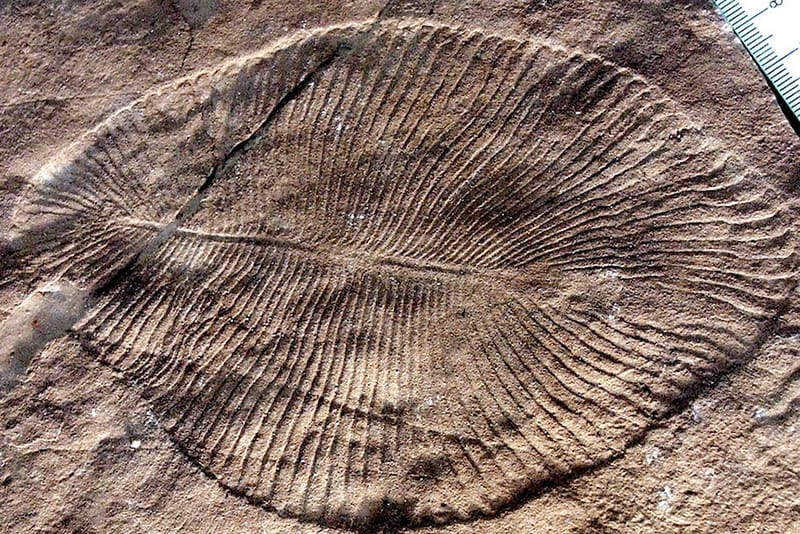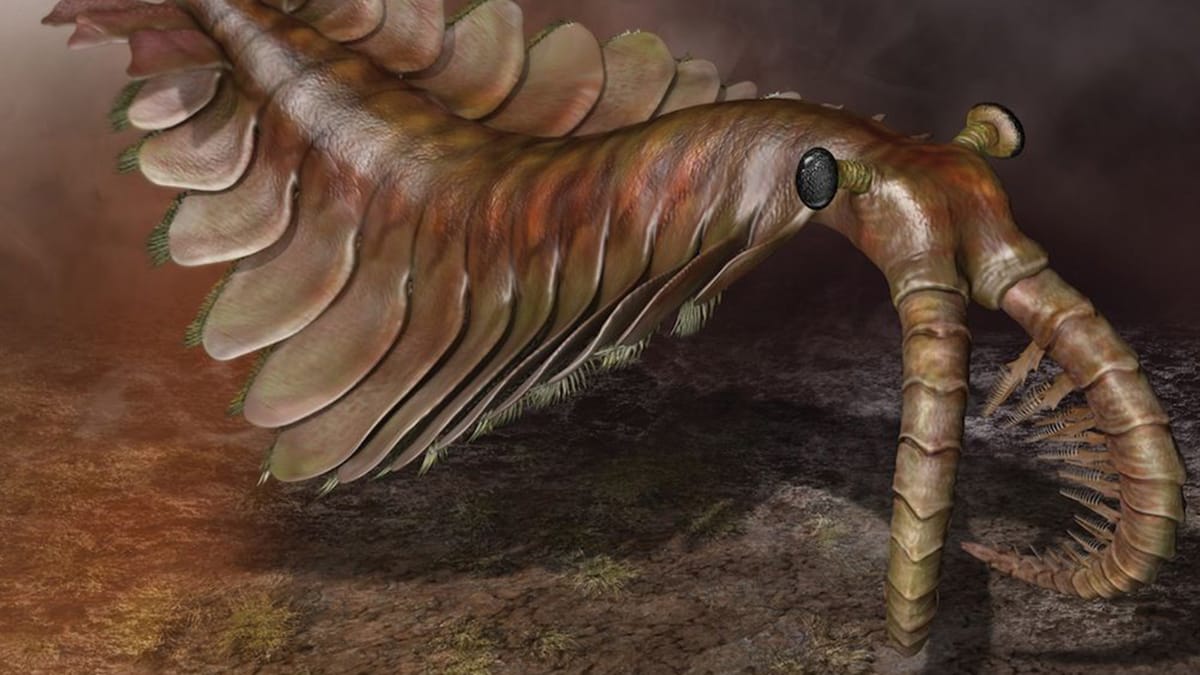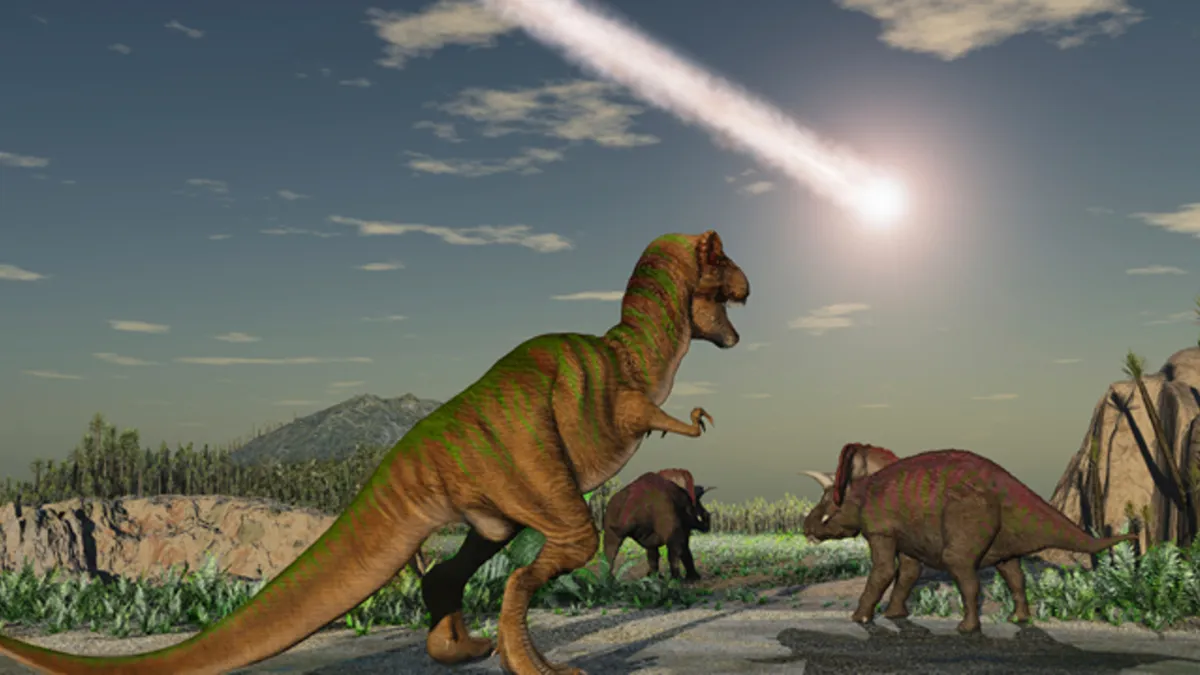Table of Contents
Despite the incessant shrieking of the usual suspects, there’s little evidence that the Earth is in the grip of a “Sixth Mass Extinction”. There is, after all, no surer sign that an idea is completely and utterly discredited than Paul Ehrlich promoting it.
But there may well be a very real Sixth Mass Extinction lurking, not in Earth’s future, but it’s deepest past.
The height of the Ediacaran period, about 550 million years ago, was a boom time for life in Earth’s oceans. Petalonamids shaped like feathers sucked nutrients from the water, slug-like Kimberella grazed on microbial mats, and the ancestors of jellyfish were just beginning to make waves.
But then 80% of life on Earth disappeared, leaving no traces in the fossil record.
Just as with the claims of a modern “6th Extinction”, there is a major caveat to this hypothesis: at this time, almost all life on Earth was soft-bodied. Hard body parts like shells and bones were only just beginning to appear. The oldest-known animal with hard body parts, a sponge-like organism called Coronacollina acula, dates to about 560 million years ago. Trilobites were about 100 million years in the future.
The vast majority of living things, though, were decidedly “squishy” — and that’s a big problem. Teeth, bones and shells fossilise pretty easy — squishy, not so easily. That’s why the major beds of Ediacaran fossils were relatively late finds in paleontology, beginning with the finds in the Ediacaran Hills — which gave the period its name — in South Australia in 1946. Sites discovered around the world since have yielded a wealth of insight into the very ancient world.

But it’s still very much a case of peering into the past through a glass, darkly.
Now, a new study suggests that these missing fossils point to the earliest known mass extinction event on Earth. These first communities of large, complex animals were killed by a steep global decline in oxygen — a finding that may have implications for modern ocean ecosystems threatened by human activities.
“This represents the oldest recognized major extinction event in the fossil record of animals,” said lead study author Scott Evans, a postdoctoral researcher at Virginia Tech. “It is consistent with all major mass extinctions, in being linked to climate change.”
There are five currently recognised mass excinctions. The Ordovician-Silurian and the Devonian extinctions (440 million and 365 million years ago, respectively) killed off many marine organisms (unsurprisingly, in an age when almost all life was found in the seas). The next, the Permian-Triassic extinction 250mya, was the biggest and baddest of all: a global cooling event so brutal that it is dubbed “the Great Dying”. Not just 81% of marine species and 70% of terrestrial vertebrate species vanished, but 83% of genera, and a staggering 57% of biological families.
The most recent mass extinction, though, is probably the best-known: the curtain-call on the Cretaceous period that wiped out the (non-bird-like) dinosaurs, along with 75% of plants and animals.
Scientists have long known about the sudden decline in fossil diversity 550 million years ago, but it was unclear if that was due to a sudden mass extinction event.
Live Science
What caused it is an open question. One hypothesis is that the arrival of the trilobites, now-extinct armoured marine arthropods, led to competition which caused the Ediacaran fauna to die out.
Or it could be that there was no extinction at all — instead, the unusual environmental conditions that had favoured the fossilisation of the soft-bodied Ediacarans simply ended. The Ediacarans may have lived on for millions of years, but not shown up in the fossil record.
However, the evidence is that environmental conditions didn’t change that dramatically, except for one factor: geochemical evidence suggests that the oceans (where most Ediacaran life lived) suddenly became depleted of oxygen. Tellingly, organisms with a high surface area-to-volume ratio, which helps cope with low-oxygen conditions, survived.
This likely very real 6th extinction changed the course of life on Earth. The weird Ediacaran fauna disappeared and the more familiar groups of animals we see today began to emerge.

If nothing else, though, the sort of shocking numbers we see from previous mass extinction events put the ludicrous claims of a modern “Sixth Extinction” into the sort of perspective they deserve.









